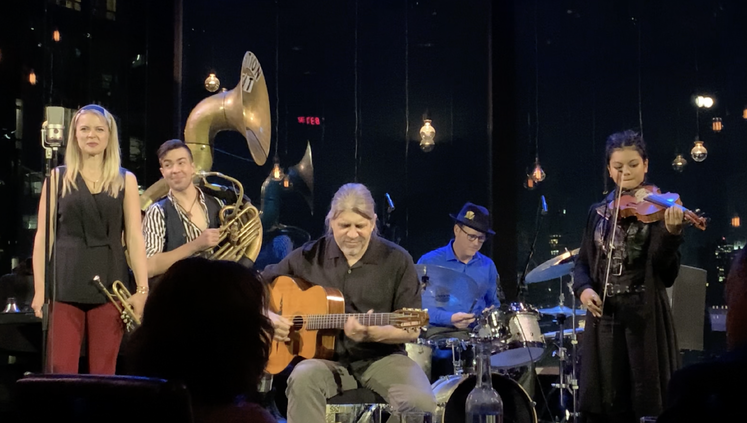
Beauty, Hope, and the Necessity of Art
The COVID-19 pandemic rocked so many different industries in 2020, but some were hit harder than others. Hospitality, for example, (i.e. restaurants and hotels) experienced deep losses.
In the world of nonprofits, arts organizations were affected disproportionately with 54% reporting revenue losses in 2020.
It’s not hard to imagine why.
The revenue model for a performing arts organization (and for any live performance venue – concerts, Broadway, symphony orchestras, theaters, and operas) depends on cramming as many people as possible into a room where that audience has paid for an experience where other people (the performers) stand on a stage and breathe on them.
You need people (the more the merrier) and you need breath in order for the live experience to work. And crowds and breath were the very things that had become deadly to many.
During 2020, we lost access to live music, to performances, to art made in real-time.
I’m not arguing that that was the worst thing to happen in 2020 or even the worst consequence of the pandemic, but as English theologian N.T. Wright has said, “When people cease to be surrounded by beauty, they cease to hope.”
Many of us lost hope in 2020.
In the fall of 2021, after 19 dark months, I got to experience a live performance at one of my favorite venues perched high above Columbus Circle in midtown Manhattan: Dizzy’s Club at Jazz at Lincoln Center. French jazz guitarist Stéphane Wrembel is famous for a specific type of music pioneered by Django Reinhardt called “Gypsy jazz.”
Before the band played, Stéphane explained that growing up in a Gypsy camp outside of Paris in the early 20s, recorded music wasn’t easily available to Django. In order for Django to learn to play music, to even hear music, he had to go find it performed live.
Sitting with his band on the stage in front of the large windows overlooking Central Park, Stéphane talked about the unique power of experiencing live performance. About how something happens in the moment when an artist shares something with an audience, a certain magic that cannot be captured in a recording.
Then he and his band demonstrated that power, as they wove a spell to enchant a weary audience who had been living on the verge of hopelessness for 19 months. The place was electric, alive with energy. For many, this was their first experience with live music in almost two years. For a brief moment we felt connected, not to just to the music, and not just to the performers, but to each other.
With a wide grin, I looked over at my friend, Pamela Butler, who leads fundraising for Jazz at Lincoln Center. Pamela looked back at me through wet eyes, motioned to the band, and said, “This makes the last year and a half worth it.” She had been tirelessly fundraising for the organization literally day and night all from her Upper East Side home. That night she finally got to experience some of the fruit of her labors.
I’ll never forget that moment, especially after having lost access to that sense of spontaneous joy for so long.
Why do I tell you this?
Because you have the power to help create this now, where you are, no matter who you are.
I passionately believe that nothing – outside of religion – has the power to mediate hope and meaning for people like the arts.
Yes, we need good healthcare, action that addresses our current climate crises, and a just society where even the most vulnerable can thrive. But undergirding, supporting, and giving people buoyant hope for each of those pursuits will be art, beauty, and music. Your soul cannot survive, let alone thrive, without it.
So, what will you create? What beautiful thing do you have inside of you that the world needs? What gifts have you been sitting on, not sharing with others?
Because remember, when people cease to be surrounded by beauty, they cease to hope.
And if there’s something the world could stand a bit more of, that’s hope.
–
If you need to move your body or get a bit of inspiration, you can find both Django Reinhardt and Stéphane Wrembel on Spotify and Apple Music.